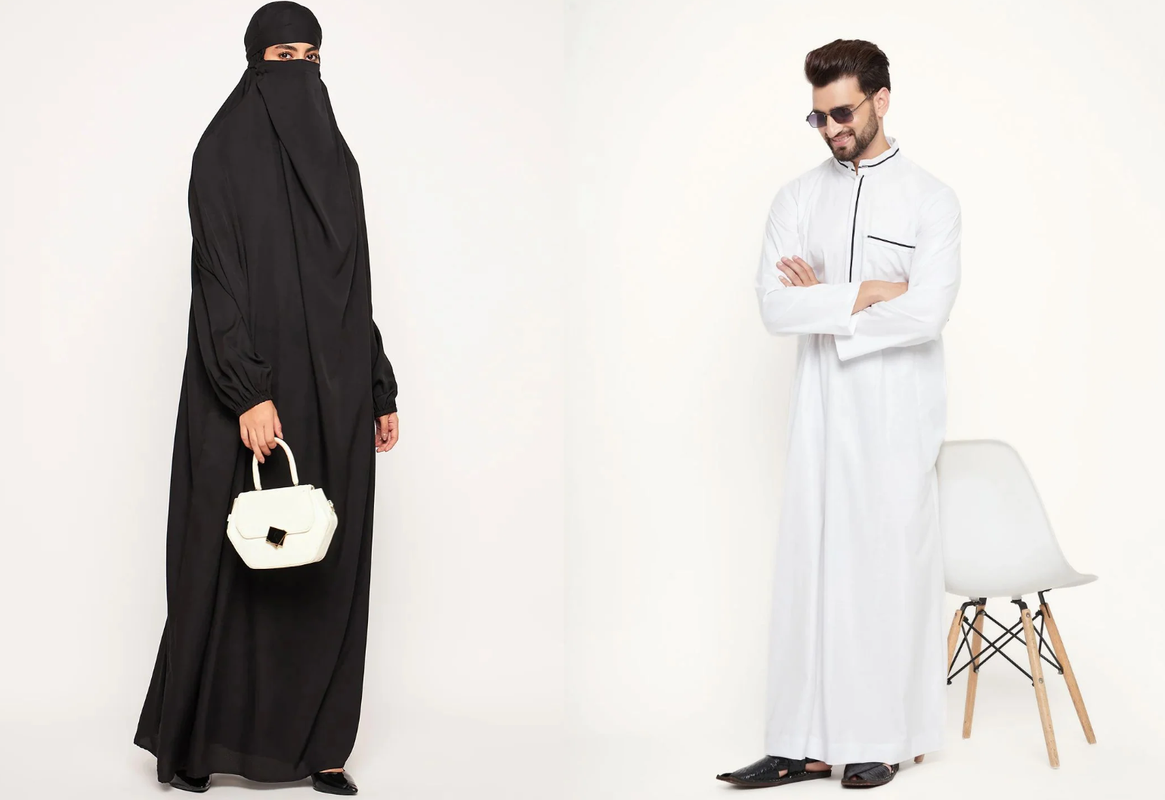The Difference Between Islamic Dress Code for Men and Women
Islam as a Broadways of life covers various aspects including moral conduct, social relations and personal dresses. Among these the Islamic dress plays a vital role in expressing Muslims faith and observing to the teachings of Islam. While both men and women are required to dress modestly the specific guidelines for Islamic dress code differ between men and women. In this detail guide we will explore these differences focusing mostly on the dress code for men.
The Concept of Modesty
At the heart of the Islamic dress code is the standard of modesty. The Quran and Hadith (advise of Prophet Muhammad) provide guidance on how Muslims should present themselves to the world. Modesty in Islam is not only about clothing but also includes behavior, manner and interactions with others. While both men and women are encouraged to represent humility the potentials for their outfit vary significantly.
Dress Code for Men
Islamic dress code for men is usually less strict as compared to women. However, it still underlines modesty and decency. Here are some key aspects of the dress code for men:
- Coverage: In Islam for Men it’s essential to cover their bodies from the bellybutton to the knees at a minimum. These requirement reflects the importance of humility and self-respect. The clothing should not be extremely tight or revealing your body.
- Types of Clothing: While there are no specific garments instructed for men they are encouraged to wear clean loose-fitting clothing. Traditional clothing varies by culture but common options include kurta or pants. In many cultures men wear long tunics or robes that fulfill the requirement of modesty. Wear Shalwar Kameez is Sunnah for Muslims.
- Avoiding Extravagance: Islamic teachings discourage men from dressing in a manner that is disproportionately profligate or affected. This attitude highlights modesty and the importance of being grounded in Muslim’s faith rather than looking for attention through flashy dressing.
- Head Coverings: Unlike women, it’s not essential for men to cover their hair but many choose to wear a cap or turban as a cultural rehearsal or a mark of goodness. The use of a head covering is more about personal choice and cultural expression rather than a strict necessity.
- Colors and Patterns: Men can wear a variety of colors and patterns in Islam there is no restriction for that. However, it is advised to avoid clothing that may be associated with vanity or arrogance. It’s prohibited for men to wear Red Color and Silk Clothes.
- Footwear: Men are generally allowed to wear any type of footwear provided it is clean and diffident. Many prefer sandals especially in warmer weathers which align with the Islamic principle of comfort.
Dress Code for Men and Women; Key Differences
The major differences in the dress code for men and women can be summarized as follows:
- Extent of Coverage: The most prominent difference is the extent of compulsory coverage. While men must cover from the navel to the knees women must cover the entire body with some exceptions depending on cultural understandings.
- Garment Styles: Men have more flexibility in choosing their garments while women’s clothing is often likely to be more elegant and specifically designed to fulfill shyness desires.
- Head Coverings: Men may wear head coverings as a cultural choice but it is not mandatory. Women on the other hand are generally required to cover their hair as part of their modest outfit.
- Social Expectations: Women often face social pressures that can influence their devotion to the dress code more than men. This dynamic can lead to varied clarifications of Islamic dress across different cultures and communities.
Final Words
Understanding the differences in the Islamic dress code for men and women is vital for development respect and gratitude for cultural practices within the Muslim community. The dress code for men accentuates modesty hygiene and simplicity allowing for personal expression while upholding Islamic morals. In contrast the dress code for women encompasses more severe guidelines aimed at preserving dignity and modesty. Finally, both men and women are encouraged to represent the principles of modesty and humility reflecting their faith through their dress. As with any cultural practice interpretations can vary and it is essential to approach these discussions with sensitivity and an open mind.





Comments